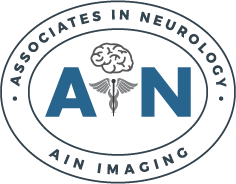
Cerebral palsy (CP) is a group of disorders that affects a person’s ability to move and maintain balance due to brain damage that occurs during fetal development or infancy. It is the most common childhood disability affecting the motor system.
While there is no cure for cerebral palsy, treatments and therapies exist and are aimed at helping the individual and caregivers manage symptoms, improve function, and enhance the quality of life for individuals with the condition. The type of treatments a doctor will recommend depends on the type of cerebral palsy and level of impairment of the patient.
Here we have an overview of the different approaches being used to treat cerebral palsy.
Early Intervention is Critical for Individuals with Cerebral Palsy
Treatment should begin as early as possible to optimize outcomes. During the early years of life, the brain undergoes significant development and is highly plastic. Early intervention takes advantage of this critical period to stimulate and promote optimal brain development. By providing appropriate interventions and therapies, the brain can adapt and form new neural connections, maximizing the potential for improved motor skills, communication abilities, and other faculties affected by the disorder.
Early intervention programs typically involve a multidisciplinary approach, including physical therapy, occupational therapy, speech therapy, and developmental interventions. These therapies focus on improving motor skills, communication abilities, and improving the overall quality of life and development of the patient.
Some treatments can be very stressful for the child, as such, programs should be individualized to the patient. Other considerations include the cost of cerebral palsy treatment, and the lifelong support needed by the child. Parents may need to access financial assistance options.
Physical Therapy
Physical therapy plays a central role in cerebral palsy treatment. It aims to improve balance, flexibility, mobility, muscle strength, and coordination.
Physical therapists will first assess the limitations of the patient and create a program that involves the use of various techniques such as stretching exercises, range-of-motion exercises, and activities to improve motor skills. Strength training is very important in patients with dyskinetic cerebral palsy who have looseness of muscles and decreased muscle tone. Physical therapists may also use temperature therapy to help muscles relax and heal.
Occupational Therapy
Occupational therapy focuses on enhancing the ability to perform daily activities and develop independence. Occupational therapists work on improving fine motor skills, self-care skills, and adaptive techniques. Some of the things that occupational therapists can help with are brushing teeth, buttoning and zipping up clothes, opening jars, and writing. They may provide assistive devices, teach energy conservation strategies, and recommend modifications to the home or school environment to promote functional independence for the patient.
Speech Therapy
Speech and language difficulties are common in individuals with cerebral palsy. Speech therapy helps improve communication skills, articulation, swallowing, and overall oral motor function. Speech therapists may use techniques such as communication devices, sign language, or augmentative and alternative communication (AAC) systems to support effective communication in patients.
Trouble with swallowing can affect a patient’s ability to eat, and nutrition may be affected, which is why speech therapists play a critical role in helping a child with oral motor exercises that involve chewing and swallowing.
Medications
Medications are often used as adjunctive therapy in managing specific symptoms of cerebral palsy. For example, muscle relaxants may be prescribed to reduce muscle spasticity, anticonvulsants to manage seizures, and pain medications to alleviate discomfort.
A child may also need medications for other symptoms, such as gastrointestinal conditions like acid reflux, constipation, and incontinence. The prescribed medications will depend on the symptoms the child is presenting. Medications should be carefully chosen and monitored by the patient’s primary care physician, considering medications have potential side effects.
Surgical Orthopedic Interventions
Orthopedic surgeries and interventions may be considered for individuals with significant skeletal deformities, contractures, or functional limitations. Procedures like tendon lengthening, joint reconstruction, or spinal surgeries can help improve mobility, correct alignment, and reduce spasticity and pain in patients with cerebral palsy.
Assistive Devices and Mobility Aids
Assistive devices and mobility aids can greatly enhance the independence and functionality of individuals with cerebral palsy. Examples include wheelchairs, walkers, canes, orthotics, and specialized seating systems. Braces, splints, and casts particularly help patients with high or low muscle tone. These devices are individually prescribed to meet specific needs and facilitate the safe and efficient mobility of the patient.
Botulinum Toxin (Botox) Injections
Botulinum toxin injections are commonly used to manage muscle spasticity in cerebral palsy. By injecting small doses of the toxin into specific muscles, spasticity and muscle tightness can be temporarily reduced. This allows for improved range of motion, easier stretching, and better functional abilities. Regular injections may be necessary to maintain the effects.
Intrathecal Baclofen Therapy (ITB)
Intrathecal baclofen therapy involves the delivery of a muscle relaxant called baclofen directly into the spinal fluid using a surgically implanted pump. This therapy can help manage severe spasticity that is unresponsive to other treatments. The pump delivers a continuous and controlled dose of baclofen, reducing muscle tone and improving mobility.
Alternative and Complementary Therapies
It is very common for families to explore alternative and complementary therapies alongside conventional treatments to treat cerebral palsy. These treatments are often referred to as natural or holistic and have produced positive results in patients with cerebral palsy.
Examples of alternative therapies include massage therapy, acupuncture, aquatic therapy, hippotherapy, hyperbaric oxygen therapy, and electrical muscle stimulation (EMS) therapy, which may help one way or another with pain, balance, coordination, muscle stiffness, gait, and walking speed.
Emotional and Psychological Support
Cerebral palsy can have a significant impact on mental health and emotional well-being of the patient. It is important to address the emotional and psychological needs of individuals with cerebral palsy. Through counseling and support groups, they can learn to develop a positive self-image and foster self-acceptance, develop their strengths, and build their confidence. Goal-setting and connecting with others with cerebral palsy also help bolster the emotional health and development of a patient with cerebral palsy.
Education and Individualized Planning
Education is essential for individuals with cerebral palsy to reach their full potential. Individualized education plans (IEPs) can be developed to address specific learning needs, accommodate physical challenges, and provide appropriate support in educational settings. Collaboration among parents, teachers, therapists, and healthcare professionals is crucial in creating an optimal learning environment.
Transition Planning
As individuals with cerebral palsy transition into adulthood, comprehensive planning is essential to address changing needs and facilitate a smooth transition. This may include vocational training, career counseling, independent living skills development, and access to community resources and support services.
Who Treats Cerebral Palsy?
Cerebral palsy is typically treated by a multidisciplinary team of healthcare professionals, including pediatricians, neurologists who specialize in diagnosing and managing neurological conditions, physical therapists who focus on improving mobility and motor skills, occupational therapists who help develop daily living skills, speech-language pathologists who address communication difficulties, and orthopedic surgeons who may be involved in managing skeletal deformities or performing orthopedic interventions. This collaborative approach ensures comprehensive care and addresses the diverse needs of individuals with cerebral palsy.
Cerebral palsy treatment combines a multi-disciplinary approach to achieve the best outcomes for the patient. Since cerebral palsy patients differ in their specific challenges and limitations, positive outcomes can only be achieved through individualized treatments. Moreover, participation of the family and caregivers is also critical to treatment success.
Doctors who specialize in cerebral palsy treatment are called neurologists, and they are knowledgeable on the unique challenges of patients and caregivers, and provide them support, as well.
Neurologist for Cerebral Palsy Treatment in Farmington Hills, Howell, and Novi, MI
The neurologists at Associates in Neurology specialize in the diagnosis and treatment of patients with neurological disorders. We will come up with the best treatment plan for your child and ensure you have all the information you need to take better care of them and achieve the best possible outcomes.
We not only provide medical treatment and act as coordinators of your child’s care, but can also be a source of emotional support, answering questions, addressing concerns, and guiding you through the complexities of managing cerebral palsy, and empowering you to make informed decisions for your child’s care.
To schedule a consultation with one of our neurologists, call our office today at (248) 478-5512, or use our convenient online form.


